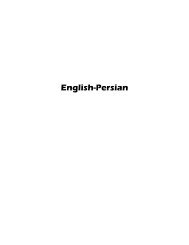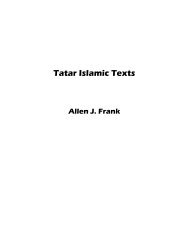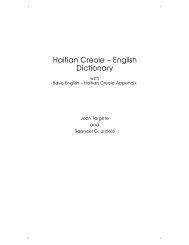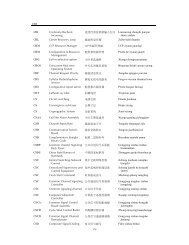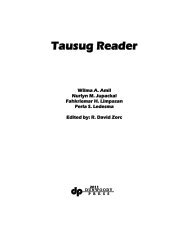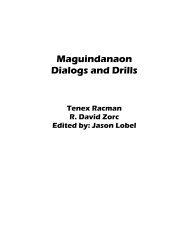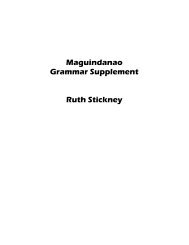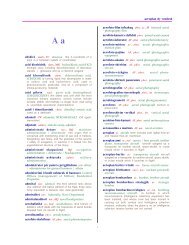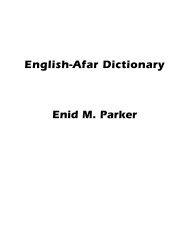Zulu Newspaper Reader - Dunwoody Press
Zulu Newspaper Reader - Dunwoody Press
Zulu Newspaper Reader - Dunwoody Press
Create successful ePaper yourself
Turn your PDF publications into a flip-book with our unique Google optimized e-Paper software.
Table 3. Relative Concords<br />
Cl SC 1 2 3<br />
1 u- o- ow- a-<br />
2 ba- aba- ab-<br />
3 u- o- ow-<br />
4 i- e- ey-<br />
5 li- eli- el-<br />
6 a- a- Ø-<br />
7 si- esi- es-<br />
8 zi- ezi- ez-<br />
9 i- e- ey-<br />
10 zi- ezi- ez-<br />
11 lu- olu- olw- ol-<br />
14 bu- obu- ob-<br />
15 ku- uku- okw- ok-<br />
17 ku- ku- okw- ok-<br />
Notes:<br />
1. The relative concords are said to derive by prefixing a- to the<br />
basic subject concord in each case, and for this reason we give<br />
this SC in the first column. This a then coalesces with the SC<br />
when it consists of a vowel, and assimilates to the vowel of the<br />
SC where the SC is of the structure CV. In this assimilation a > e<br />
before i: a > a before a: and a > o before u.<br />
2. The concords used in direct and indirect relative constructions<br />
are the same, except in the case of Cl. 1, which has a- as indirect<br />
relative concord, and o- or ow- as direct relative concord.<br />
3. Column 1 gives the concords found before consonants.<br />
4. In Cls. 11, 15 and 17, the variants in Column 3 occur before the<br />
vowel o, while the variants in Column 2 occur before the vowels<br />
a and e.<br />
5. In all other classes the variants in Column 2 occur before any<br />
vowel.<br />
xlvii



